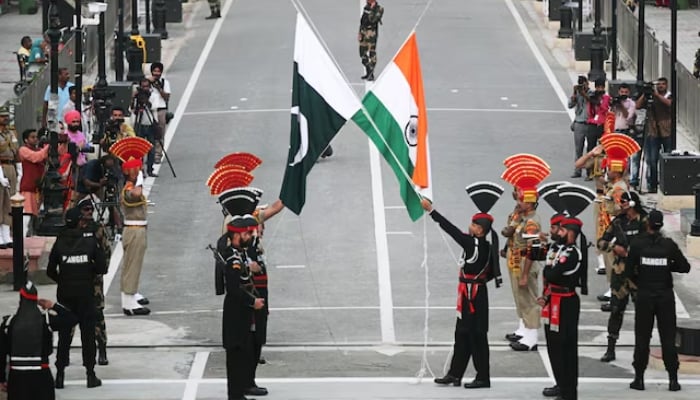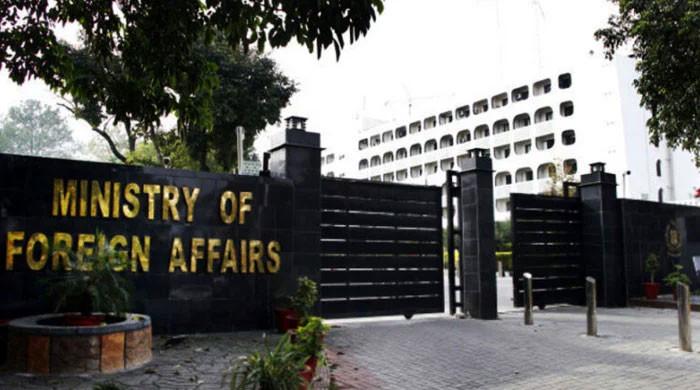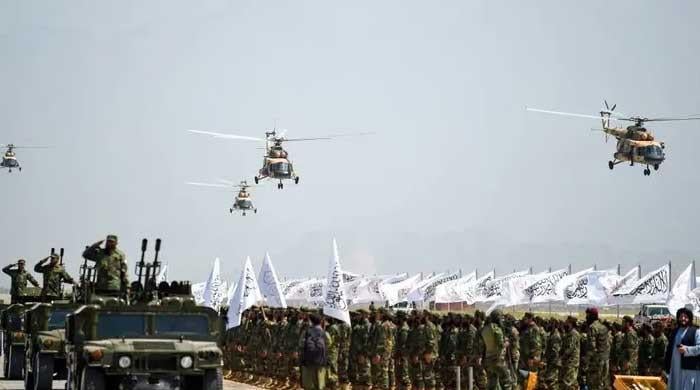Pakistan outsmarted India on all fronts
India announced that it will use Rafale, Mirage 2000, and Sukhoi-30s in this air exercise
May 13, 2025

ISLAMABAD: India's first attack was on May 5 when it stopped water flowing to Pakistan rivers from two of its major dams.
After over 24 hours, on May 6 when the water pressure increased, India reopened dam gates in hopes to flood the rivers of Pakistan. Simultaneously — in the late hours of the same day — India tried to further divert Pakistan's defence attention by announcing a 'so-called' large-scale air exercise on its southern border with Pakistan.
"The exercise will begin at 3:30pm on May 7 and continue until 9:30pm. On May 8, during which airspace in the region will be restricted to ensure safety and operational integrity." It is pertinent to mention here that India's Operation Sindoor took place between 1:05am and 1:30am (IST) (12:35am to 1:00am PST).
More importantly, India announced that it will use Rafale, Mirage 2000, and Sukhoi-30s in this air exercise. These were the same type of fighter jets which Pakistan claims it had downed during India's Operation Sindhoor.
A defence source told The News: "India deliberately used water flooding and air exercise tactics to divert Pakistan's attention as they simultaneously attacked us with missiles on May 7."
The defence expert also hinted at the possibility that India might have also attacked Pakistan using fighter jets which were supposed to be aired for the announced exercise. This area where India announced air exercise lies on the border adjacent to Umerkot, Nawabshah, Sukkur, Ghotki, Sadiqabad and Rahim Yar Khan.
On May 5, India closed the gates of two of its major dams supplying water to the rivers of Pakistan, Salal and Baghlihar dams. The Economist (Indian News Agency) reported that India has intensified its response to Pakistan after the Pahalgam terror attack by choking water flow under the Indus Waters Treaty.
Gates of the Salal and Baglihar dams on the Chenab River have been closed. This marks a bold move to halt river flow to Pakistan, affecting the Indus, Jhelum, and Chenab rivers.
Later after more than 24 hours, on May 6, India reopened the gates of these dams hoping to flood the rivers of Pakistan with high-pressure water flow. It was reported by India that multiple gates are being opened of the Salal and Baghlihar Dam, causing Chenab waters to gush into Pakistan territory.
"The release of water could potentially result in flooding in Pakistan, impacting their agriculture during the sowing season. An expert states, India has decided to weaponise water as part of strategic warfare", stated The Economist.
India did not stop here. On May 6, the Indian Air Force (IAF) announced a large-scale air exercise to be conducted along the India-Pakistan border, starting on May 7 and continuing to May 8.
According to what Indian media reported, this exercise involved all frontline aircraft, including Rafale, Mirage 2000, and Sukhoi-30s.
"The Indian Air Force (IAF) will carry out intensive aerial operations in Rajasthan as part of its regular operational preparedness efforts. The exercise will begin at 3:30pm on May 7 and continue until 9:30pm on May 8, during which airspace in the region will be restricted to ensure safety and operational integrity", states a report published in Desh Sewak.
Originally published in The News









